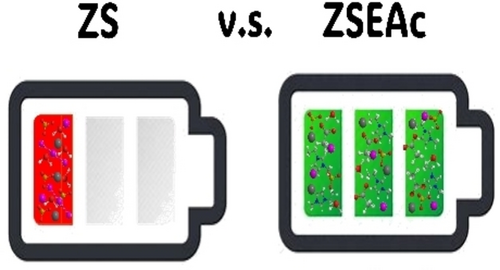Enhancing the Cycle Life of Zinc–Iodine Batteries in Ionic Liquid-Based Electrolytes
Graphical Abstract
Xiao et al. demonstrate the use of an ionic liquid (IL) additive in zinc-iodine (Zn−I2) batteries, which serves to optimize Zn solvation and the anode interface, as well as aids in inhibiting polyiodide dissolution. The research findings reveal a capacity decay rate of 0.01 % per cycle over 18,000 cycles (4 A g−1) in a full cell. Such promising results suggest a significant advancement in the field, offering high performing Zn−I2 batteries.
Abstract
Aqueous zinc–iodine (Zn−I2) batteries are gaining significant attention due to their low-cost, high safety and high theoretical capacity. Nevertheless, their long cycle and durability have been hampered due to the use of aqueous media that, over time, lead to Zn dendrite formation, hydrogen evolution reaction, and polyiodide dissolution. Xiao et al. recently reported the addition of an imidazolium-based ionic liquid (IL) to an aqueous electrolyte and found that the IL plays a key role in modifying the solvation of Zn2+ ions in the bulk electrolyte and the inner Helmholtz plane, repelling H2O molecules away from the Zn anode surface. UV/Vis and NMR spectroscopy also indicates a strong interaction between imidazolium cation [EMIM]+ and I3−, thereby reducing polyiodide shuttling and enhancing the cycle life of the battery. Overall, a capacity decay rate of only 0.01 % per cycle after over 18,000 cycles at 4 A g−1, is observed, making the use of IL additives in aqueous electrolytes highly promising candidates for Zn−I2 batteries.
Open Research
Data Availability Statement
The data that support the findings of this study are available from the corresponding author upon reasonable request.





